• AWE USA 2025 kicks off on June 10 in Long Beach, California, with over 200 leading spatial computing companies participating
• Highlights include industry-leading RGB OLEDoS with up to 5,000 PPI resolution and immersive binocular-style microdisplay products
• eMagin unveils ultra-compact White OLEDoS products, currently in production, and RGB OLEDoS products, scheduled for mass production next year
SEOUL, June 11, 2025 - Samsung Display is showcasing its latest innovations at the Augmented World Expo (AWE USA 2025), the world's largest XR-focused exhibition, held from June 10 to 12 in Long Beach, California. Marking its first-ever participation in the event, Samsung Display underscores its leadership in OLED on Silicon (OLEDoS)¹, highlighting its pivotal role in the rapidly evolving spatial computing² ecosystem.
Established in 2010, AWE USA is a leading global event for the XR (Extended Reality) industry, which includes AR (Augmented Reality), VR (Virtual Reality), and MR (Mixed Reality), bringing together prominent hardware manufacturers, content creators, and investors. This year's exhibition hosts approximately 200 participating companies at the forefront of the spatial computing ecosystem including Google, Meta, Qualcomm, Pico, and XREAL.
"Technological innovations driving spatial computing are advancing more dynamically than ever," said Jae Beom Choi, Executive Vice President and Head of M-P/J Division at Samsung Display. "Through our participation at AWE, we aim to showcase the vast potential of OLEDoS to consumers and reinforce our position as a key partner in the spatial computing ecosystem."
As part of its debut at AWE USA, Samsung Display showcases its latest technological advancements in OLEDoS, a core technology in the XR market. This includes its flagship 1.4-inch RGB OLEDoS panel, boasting an industry-leading resolution of 5,000 pixels per inch (PPI). Despite its compact size, similar to that of a standard wristwatch, the display contains three times the number of pixels found in a 4K TV, delivering lifelike visual clarity. First unveiled in May at Display Week 2025, the world’s largest display exhibition hosted by the Society for Information Display (SID), held in San Jose, California, the RGB OLEDoS won the prestigious "People’s Choice Award" in the AR/VR/MR Demo Product category.
Samsung Display also presents a 1.3-inch RGB OLEDoS panel with a resolution of 4,200 PPI and a peak brightness of 20,000 nits. The display incorporates Micro Lens Array (MLA) technology—which leverages the principles of convex lenses—to enhance both brightness and viewing angle. This technology advancement marks another milestone for Samsung Display, following its debut of a 5,000-nit version at SID 2024 and a 10,000-nit version earlier this year at CES 2025.
Visitors can also experience immersive binocular demonstrations showcasing Samsung's high-resolution OLEDoS displays, including a 1.3-inch RGB OLEDoS (4,200 PPI, 12,000 nits) and a 1.3-inch White OLEDoS (4,000 PPI, 10,000 nits), developed as binocular demo products to simulate real-world headset experiences and maximize immersion.
eMagin, a wholly owned subsidiary of Samsung Display, specializing in OLED technology, is exhibiting its OLEDoS microdisplays, including an ultra-compact 0.62-inch White OLEDoS and RGB OLEDoS, both with a pixel density of 2,600 PPI. The White OLEDoS is already in mass production, while the RGB OLEDoS, which is currently undergoing customer evaluations, is scheduled for full-scale mass production starting next year.
Samsung Display also showcases a gaming-themed room including 49-inch and 27-inch QD-OLED gaming monitors, the Samsung OLED-equipped Steam Deck handheld gaming console, and the foldable "Flex Gaming" concept display. With superior color reproduction and fast response time, OLED is an ideal display technology for gaming, and its strengths translate well to XR applications, where immersive experience is key.
Furthermore, Samsung Display presents the next-generation form factors including the 12.4-inch ‘Rollable Flex™’, multi-foldable display 'Flex S™' that folds both inward and outward, and a MicroLED-based stretchable display, highlighting its display leadership.
Samsung Display aims to solidify its growth in the fast-surging XR market, which is projected to grow from approximately $600 million in 2025 to $4.1 billion by 2030, driven by a compound annual growth rate of 47%. OLEDoS panels are anticipated to lead this growth, accounting for 70% to 80% of the total XR panel market.

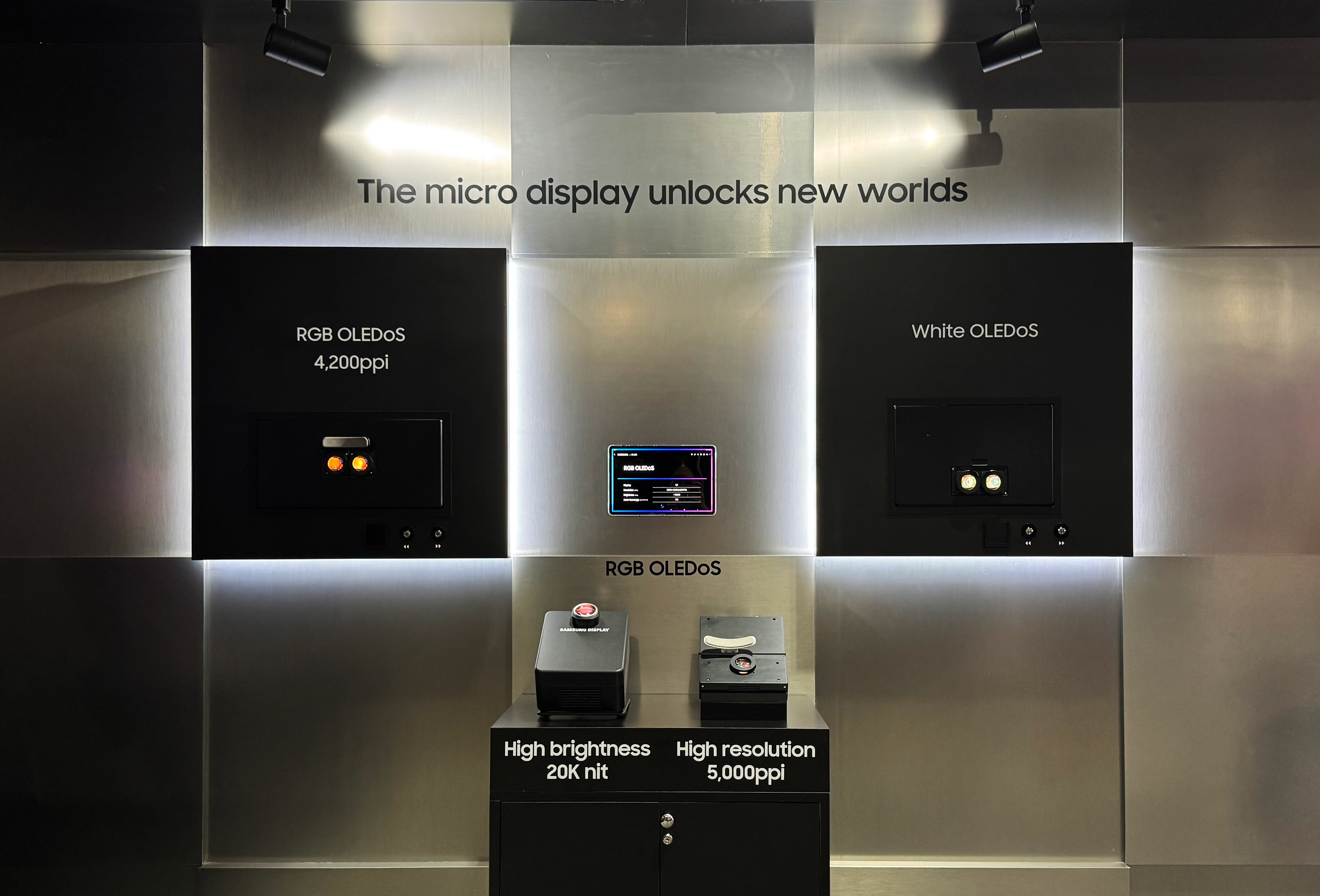
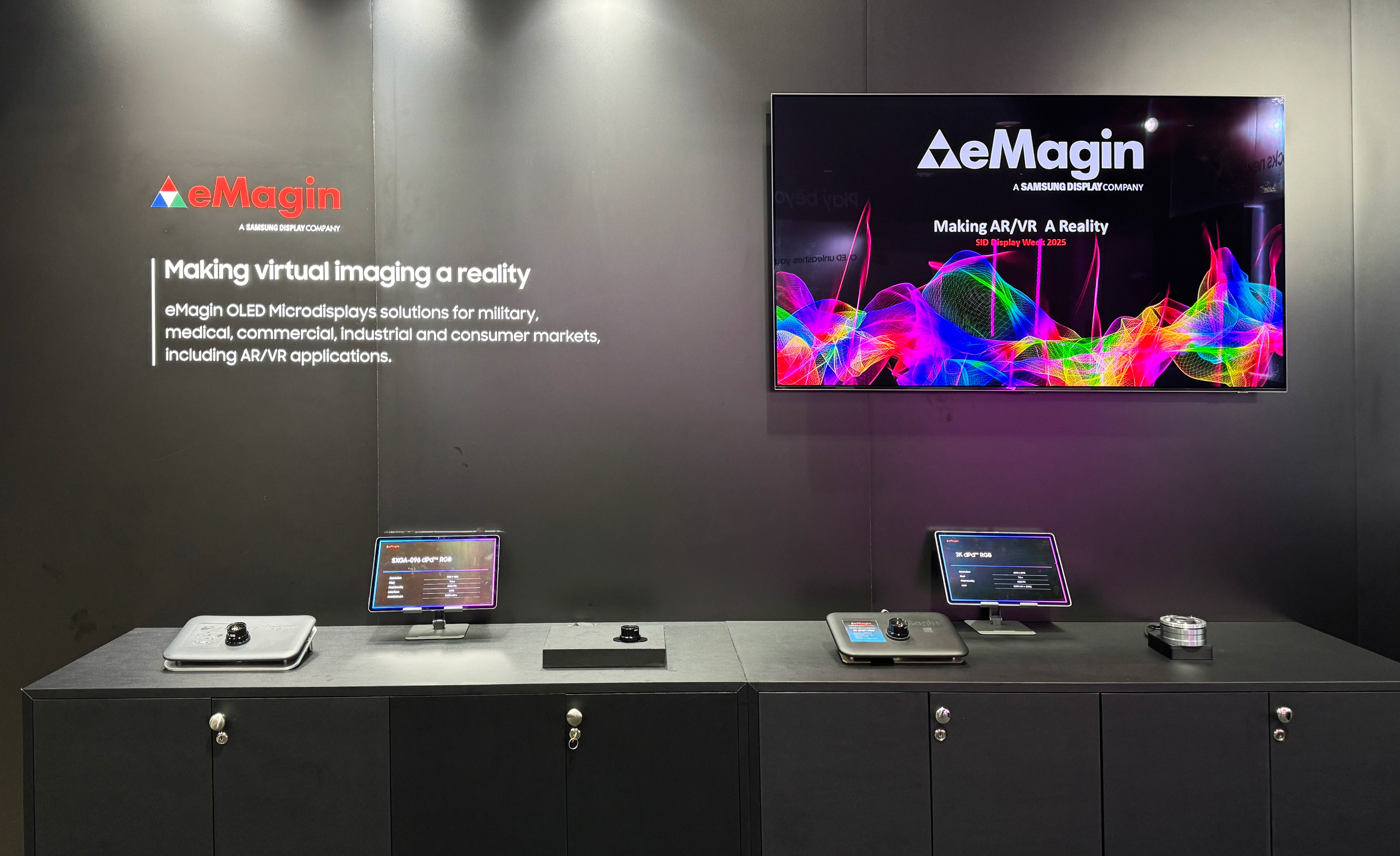
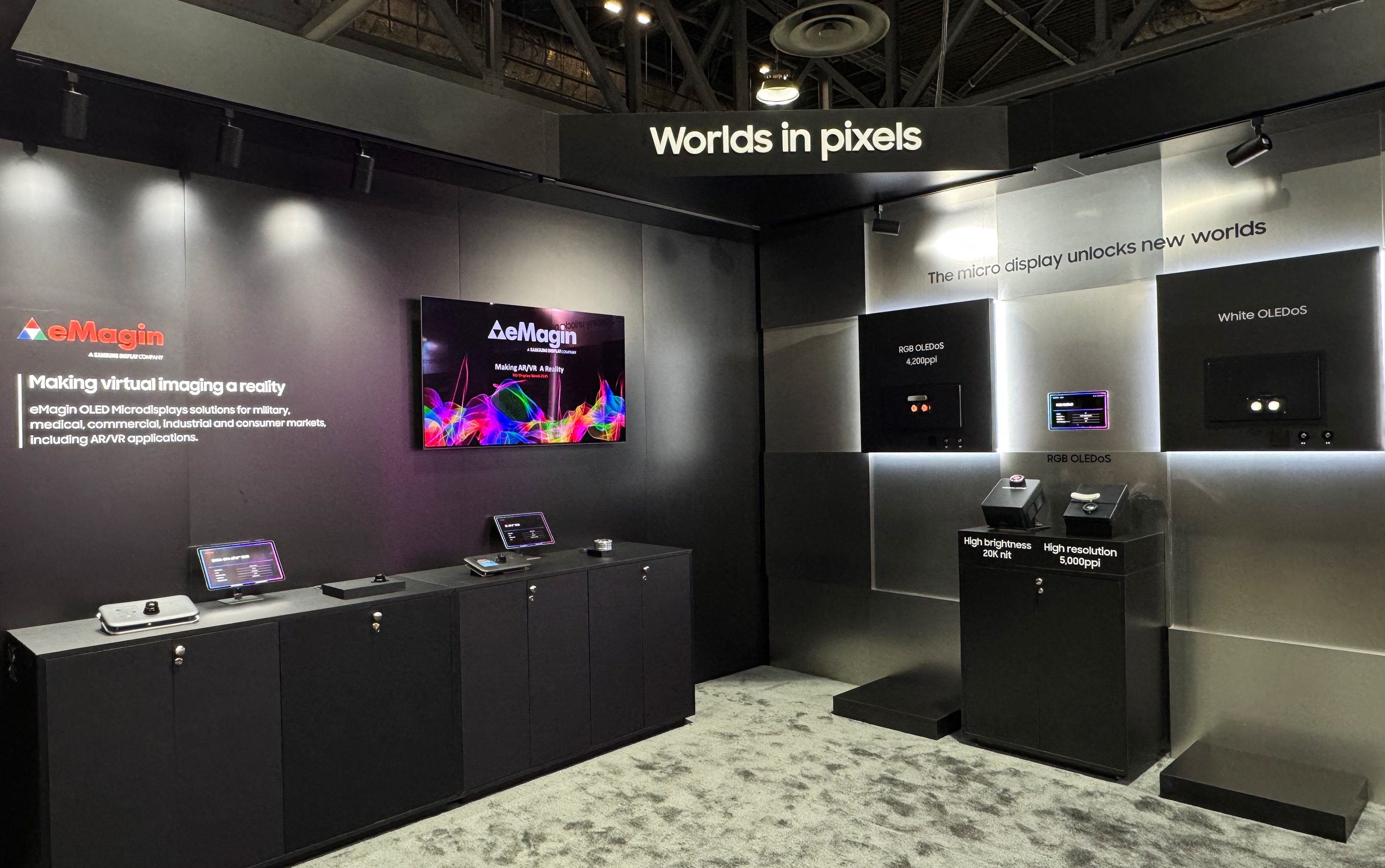


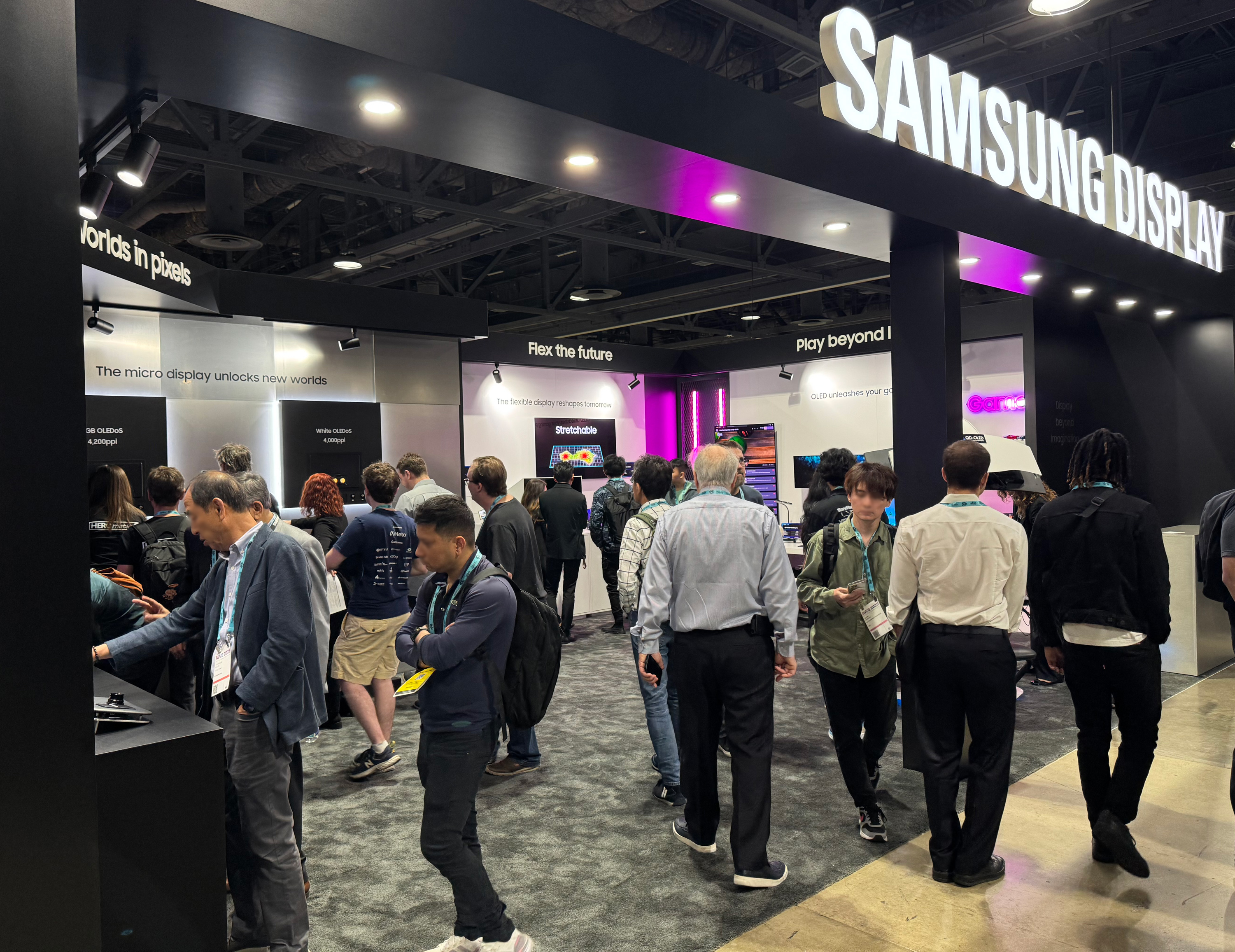

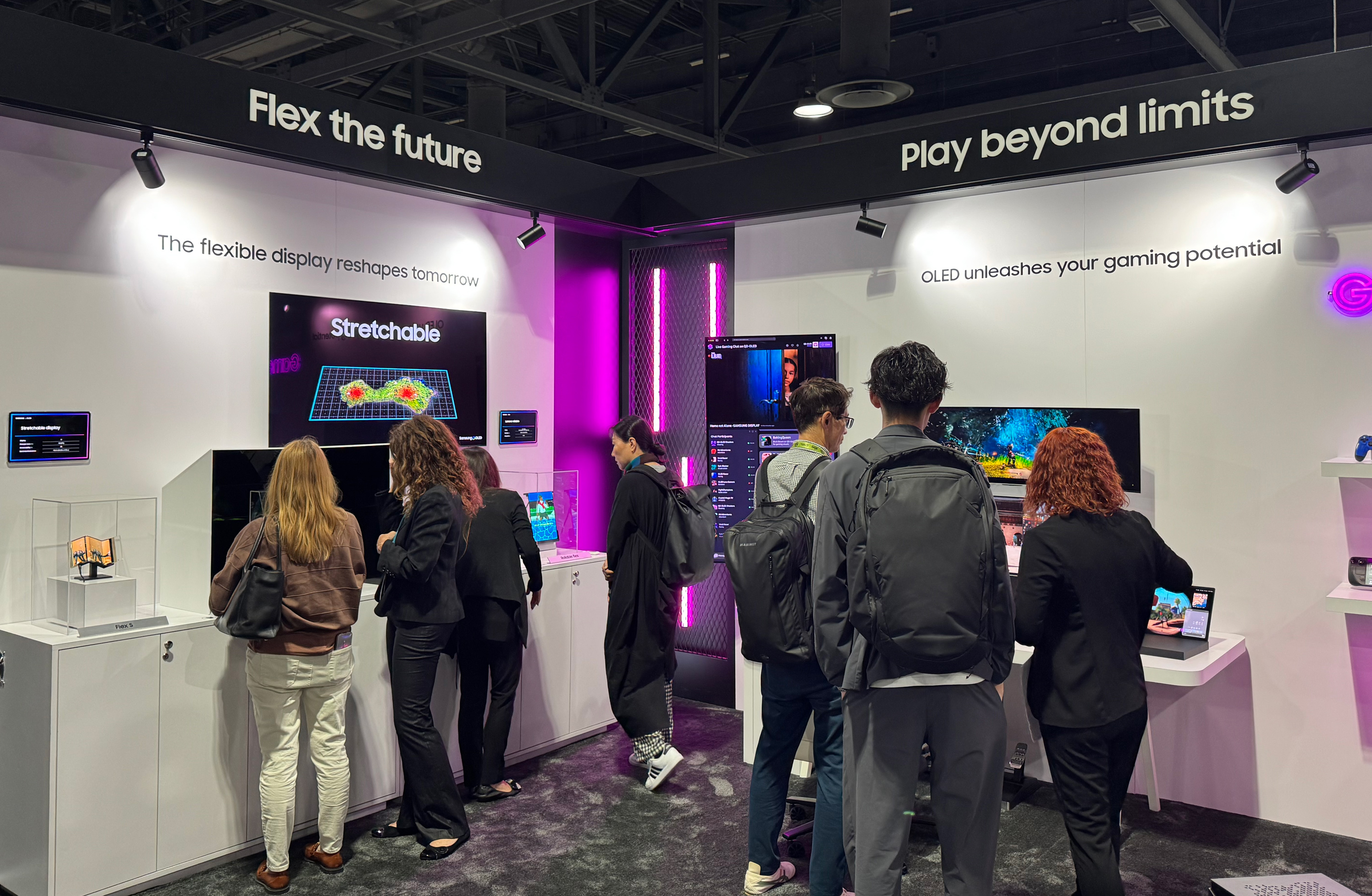
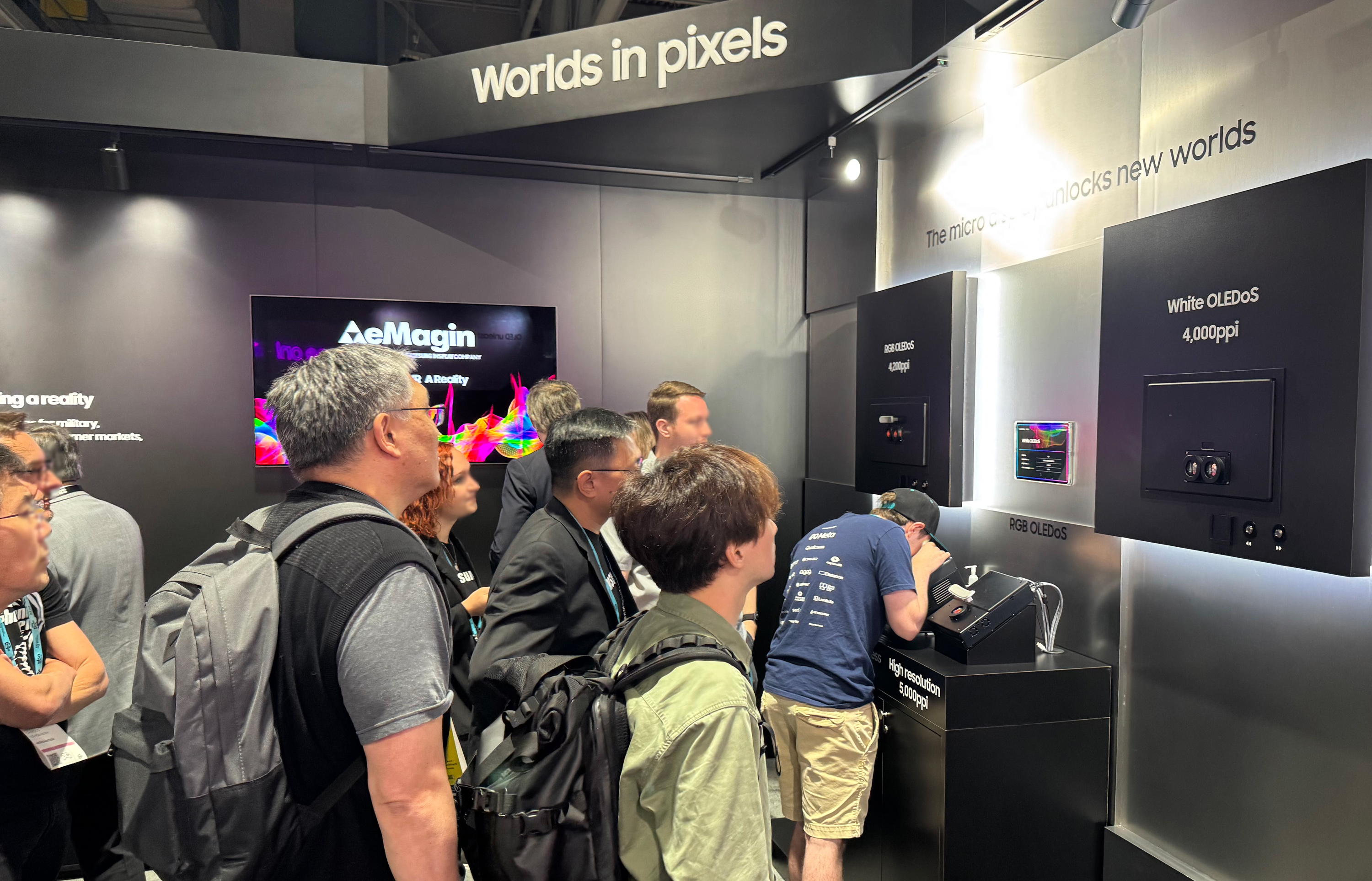
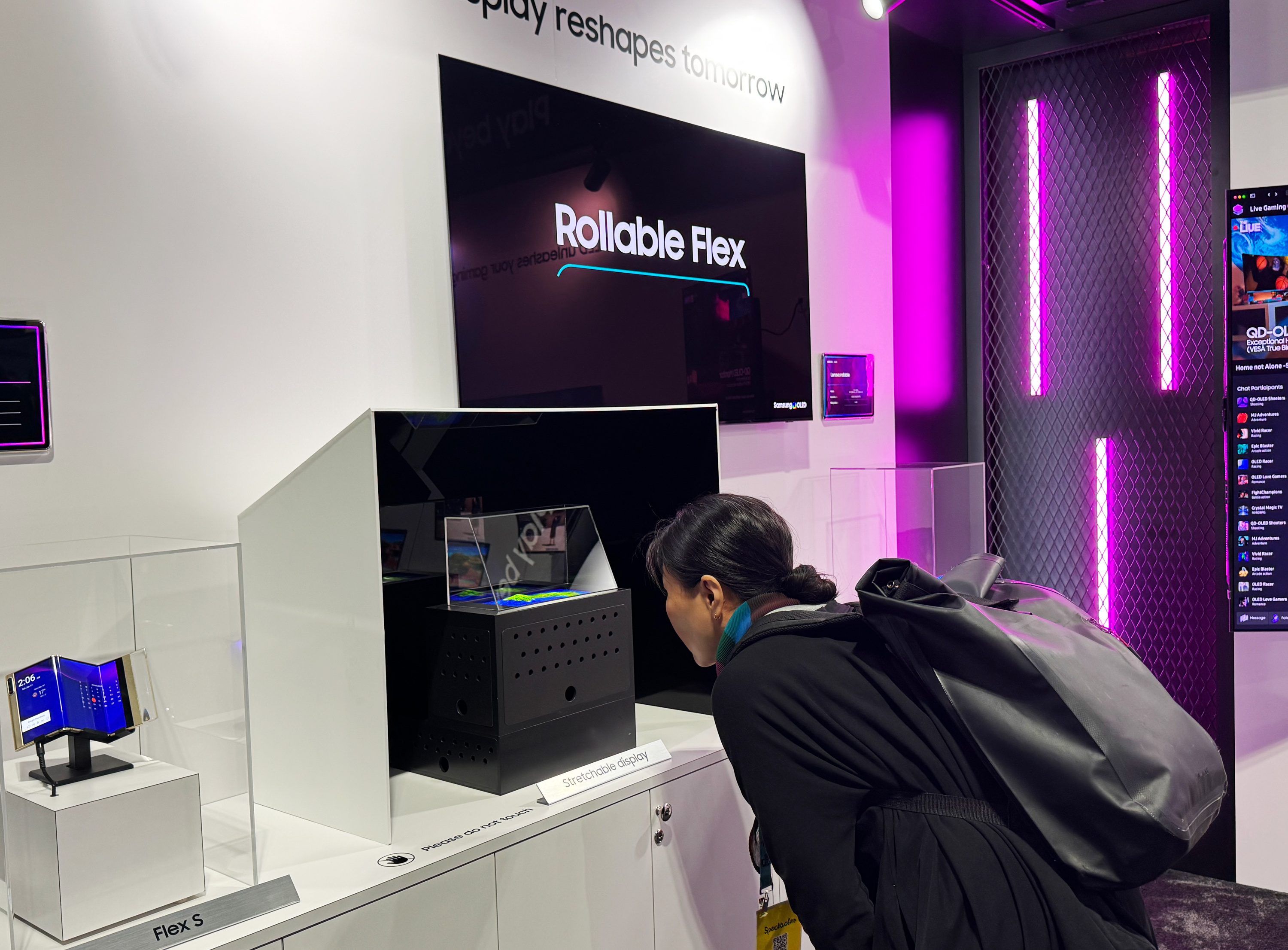
[1] OLEDoS (OLED on Silicon) is an ultra-high-resolution display technology that deposits organic materials directly onto a silicon wafer, enabling pixel sizes as small as tens of micrometers(㎛). It plays a central role in XR headsets and is categorized into two types:
1. RGB OLEDoS creates colors using individually deposited red, green and blue OLED subpixels
without color filter, delivering a wide color gamut and distortion-free viewing from any angle.
2. White OLEDoS uses a white OLED light source combined with RGB color filters to produce color.
[2] Spatial Computing is a computing paradigm that extends the user interface beyond physical displays and input devices, enabling the entire surrounding environment to become an interactive workspace. Instead of launching apps on a traditional flat monitor, users can position digital content freely within their physical space at any scale and interact with them using virtual keyboards rendered mid-air instead of physical peripherals. The term ‘Spatial computing’ was first introduced in a 2003 paper by Simon Greenwold of the MIT Media Lab. As the XR industry gains momentum, spatial computing is expected to emerge as a new computing platform—following PCs and smartphones—at the core of future digital experiences.

